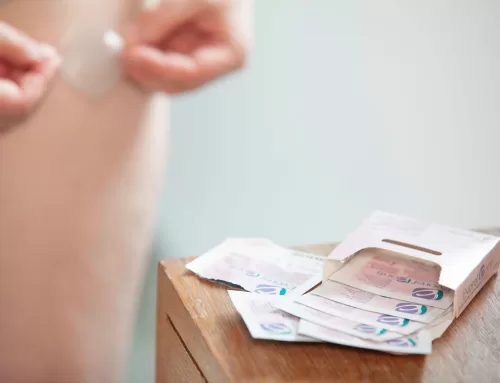 Testosterone is an important hormone for men’s health throughout life.
Testosterone is an important hormone for men’s health throughout life.
Starting before birth, testosterone helps with the development of the male reproductive system, including the development of the penis and testes. Testosterone levels then remain low until puberty.
At puberty, testosterone levels increase to the adult range. This causes the physical changes of puberty, including growth of facial and body hair, deepening of the voice, growth of muscle and bones, and enlargement of the genitals. Testosterone also increases sex drive and plays an important role in sperm production and hence fertility.
In most healthy men, testosterone levels remain in the normal adult range throughout the rest of their adult lives [1].
In some men, however, testosterone levels may not increase at the onset of puberty or can decrease to low levels during adulthood.
Low testosterone is associated with a number of symptoms that significantly impact health and quality of life. Low testosterone is also associated with an increased risk of developing other health conditions, such as type 2 diabetes and osteoporosis.
Very low testosterone levels are clearly abnormal. However, in older men, especially if overweight or suffering from chronic disease, testosterone may be slightly low. Whether slightly low testosterone is a cause or consequence of being overweight or ill health is not known.
Signs of low testosterone
The signs of low testosterone include:
- Fatigue or lack of energy
- Lack of strength
- Weight gain
- Decreased interest in sex (low sex drive or low libido)
- Erectile dysfunction
- Emotional bursts
- Difficulty concentrating
However, these symptoms are fairly common in many people. And some of these changes also happen with the normal ageing process and overlap with symptoms of other health conditions. This is why it is important to discuss these symptoms with your doctor (GP) to find the cause.
What can cause low testosterone?
Low testosterone can be caused by a number of health conditions.
These can include true hypogonadism (sometimes also referred to as organic or classical hypogonadism). This is a condition where the testes do not produce enough testosterone.
Hypogonadism may either be caused by conditions that directly affect the testes (such as undescended testes, injury, infections) or by conditions that affect the pituitary gland or the hypothalamus. Such conditions can be present from birth due to genetic conditions, but might not be recognised until puberty, or sometimes even later in life.
In contrast to true hypogonadism, testosterone may also be reduced in chronic disease, most importantly obesity, diabetes and with some medications, including cancer treatments (e.g. chemotherapy).
Taking extra testosterone to boost testosterone levels seems like a simple solution. Unfortunately, it is not that easy.
Different conditions require different treatments. This is why it is very important to work out the reason for low testosterone. Plus, taking testosterone therapy when it is not needed may have harmful side effects, such as infertility, the testes shrinking and increased risk of blood clots.
In many men, especially if overweight, obese, or suffering from ill-health (including diabetes), low testosterone can be a warning sign for sub-optimal health. Making changes towards a healthier lifestyle, losing excess weight and optimising any chronic health conditions (like diabetes, depression and sleep apnoea) with your doctor, could safely increase testosterone, as well as improve overall well-being and quality of life.
However, true hypogonadism is a potentially serious condition not to be missed. This requires assessment by a specialist who will make sure you receive the right treatment.
When can testosterone therapy help?
To help clarify when testosterone therapy should be given, the Endocrine Society of Australia led the development of clinical practice guidelines in 2016 [2, 3]. These guidelines were developed by experts in the field, who reviewed the latest evidence to ensure men received the correct and safest treatment for their condition.
They determined that testosterone therapy can help men who do not produce enough testosterone due to true hypogonadism i.e. because of testicular disease or pituitary failure. For these men, testosterone therapy improves sexual function, increases energy, improves bone density and body composition [3].
The clinical guidelines found there was not enough evidence to show testosterone therapy is beneficial and safe for other men with low testosterone who do not have testicular disease or pituitary failure.
According to Professor Bu Yeap, an endocrinologist at the Fiona Stanley Hospital in Perth and the incoming president of the Endocrine Society of Australia, the clinical guidelines developed in 2016 still reflect the best available evidence about the safety and effectiveness of testosterone therapy.
Whether testosterone can help other men is currently being addressed by a large Australian research study, called T4DM (www.t4dm.org.au). This study explored whether testosterone treatment combined with lifestyle change, can prevent type 2 diabetes in men with low testosterone and pre-diabetes.
“The results of the TD4M study are due to be released this year. They will provide the first high-quality evidence about whether testosterone therapy can be used to protect men with low testosterone from developing diabetes,” states Professor Bu Yeap.

Can testosterone be increased without medication?
According to Professor Mathis Grossmann, an endocrinologist specialising in men’s health, there are a number of ways testosterone can be increased with lifestyle changes [4].
These include through
- Losing excess weight
- Taking part in regular physical activity
- Reducing stress
- Eating a healthy diet
“When men actively make these lifestyle changes, not only do we see a modest increase in their testosterone level, we also see overall health improvements, and men report a much-improved quality of life,” says Professor Grossmann.
———————
The medical content of this article has been reviewed by Professor Bu Yeap and Professor Mathis Grossmann. Professor Bu Yeap is the President-Elect of the Endocrine Society of Australia, a Professor in the Medical School, University of Western Australia, and a consultant endocrinologist in the Department of Endocrinology and Diabetes at Fiona Stanley Hospital. Professor Mathis Grossmann is a member of ESA Council, and a Principal Research Fellow at the Department of Medicine, University of Melbourne, Austin Health. He is also a Consultant Endocrinologist and Head of Andrology at Austin Health, where he runs Endocrine Men’s Health and Endocrine Breast Cancer Clinics.
References
- Kelsey, T.W., et al., A validated age-related normative model for male total testosterone shows increasing variance but no decline after age 40 years. PLoS One, 2014. 9(10): p. e109346.
- Yeap, B.B., et al., Endocrine Society of Australia position statement on male hypogonadism (part 2): treatment and therapeutic considerations. Med J Aust, 2016. 205(5): p. 228-31.
- Yeap, B.B., et al., Endocrine Society of Australia position statement on male hypogonadism (part 1): assessment and indications for testosterone therapy. Med J Aust, 2016. 205(4): p. 173-8.
- Grossmann, M. and A.M. Matsumoto, A Perspective on Middle-Aged and Older Men With Functional Hypogonadism: Focus on Holistic Management. J Clin Endocrinol Metab, 2017. 102(3): p. 1067-1075.







